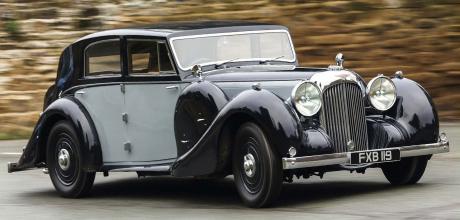1938 Lagonda V12
Lagonda’s V12 was an ostentatious pre-war masterpiece that delivered luxury and performance in spades. Its allure remains undimmed to this day.
WORDS MARTIN BUCKLEY
PHOTOGRAPHY LUC LACEY
Great expectations
If, by mentally digesting facts and figures, and weights and measures, you can generally imagine what most old cars are like to drive (without actually having to get behind the wheel), it sometimes feels as if there are not many surprises left.
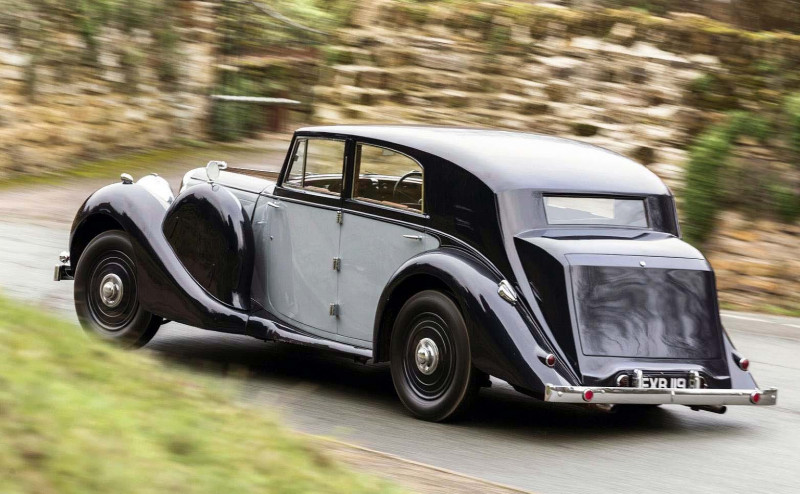
Jaded? I hope not. But I cannot deny that the number of untried cars that retain a high intrigue factor – a nagging urge to know what they are all about, good or bad – is shrinking all the time. It remains a pretty lengthy inventory, mind:250GTOs and GT40s make the cut, and who wouldn’t want a pedal in the Uhlenhaut 300SLR Coupé? But by no means are all of the candidates quick, rare, valuable or even conventionally desirable. Moskvichs, rear-engined Škodas and Bond Bugs come to mind just as easily, but also a slew of heavyweight 1930s machinery that has tended to be outside my post-war comfort zone. You have to be careful what you wish for.
‘The Lagonda V12 feels like a chariot of the gods. It covers ground with almost indecent haste for an 85-year-old car
I hated the only Duesenberg I have driven, and I’m prepared to be disappointed by oddities such as the Autovia, the Standard Flying V8 and the Crossley Burney Streamline, which were probably rare cars for good reasons. It is an everchanging list that I will likely never finish, but within it the lure and mystique of the Lagonda V12 has remained persistent and hard to ignore.
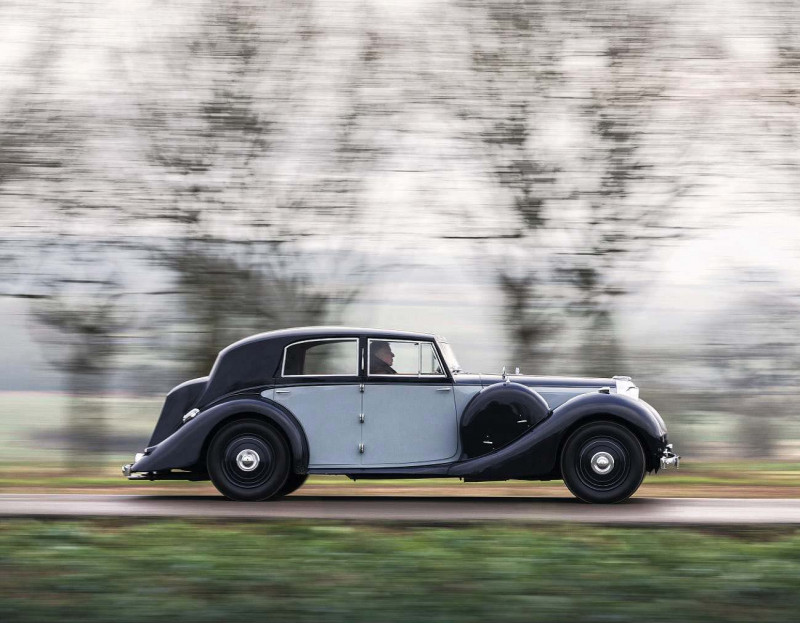
Like all the best cars, the Lagonda V12 has a good story behind it. Colourful tycoon Alan Good rescued Lagonda in 1935 and lured a disillusioned WO Bentley, whose contract at Rolls-Royce had finished. Buoyed by the firm’s victory at Le Mans that year, the new boss told his Staines workforce they were going to build ‘the best car in the world’. Arguably, they did.
Everything about WO’s new V12 was uncompromising, with no thought given to what it would cost to build or what customers might pay. At just under £1200 (with the factory saloon body), it was a car beyond the wildest imaginings of most people at a time when a new Austin Ruby was £125 and the average annual salary was less than £200. But it all depended on your point of comparison: Britain’s other V12 supercar of the era – the 7.3-litre Rolls-Royce Phantom III – cost £2600 in chassis form only.
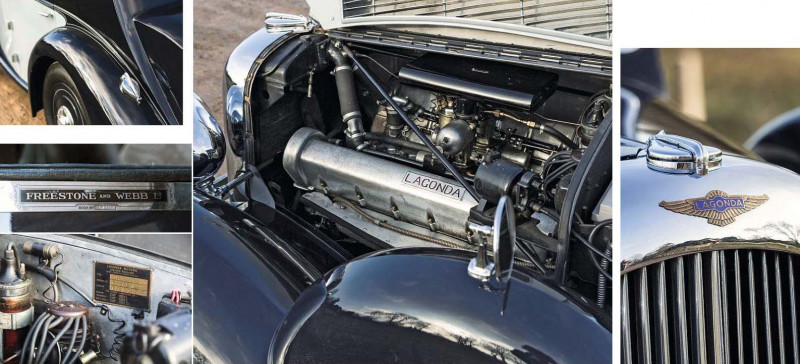
The flagship Lagonda had a cheaper in-house rival for those who didn’t need the ultimate 12-cylinder refinement and urge: the Meadows-engined 4½-litre LG6 sat on the same chassis if you wanted to approach the ton in a less complex – but equally handsome – six-cylinder Lagonda. The V12, meanwhile, was rated at 42bhp under the RAC system, so buyers paid £42 a year in tax – roughly a domestic servant’s salary at the time.
RAC horsepower ratings had for decades wedded British engineers to a low-revving, long-stroke, narrow-bore formula that attracted less tax. But Bentley wanted a high-revving – for the ’30s – and relatively short-stroke engine that would push a large saloon along at a minimum of 100mph and cruise at 85mph on Europe’s new fast, open superhighways, while retaining the sort of top-gear elasticity that reduced gearchanges to a minimum. His aim was a top gear that would take you from rest to 110mph.
Bentley claimed that his V12, which made extensive use of Chromidium and Duralumin alloys in its construction and was designed with the help of ex-Rolls-Royce engineer Stewart Tresilian and gearbox man Charles Sewell, would go 250,000 miles between rebuilds. In fact, both of Britain’s 1930s V12s earned poor reputations in service, at a time when technical ambitions were, perhaps, ahead of materials technology. Which was the better car depended on what kind of body was fitted, and what sort of motoring you chose to do. But there was little doubt that the more compact 4480cc, 180bhp Lagonda would have greater appeal for those who wanted to do their own driving.
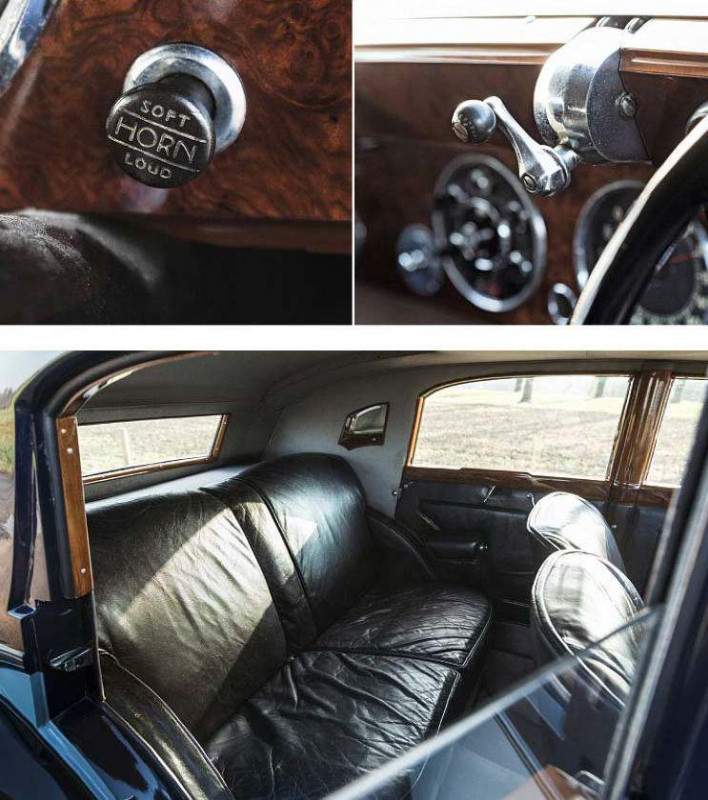
The Lagonda V12 was first seen at Olympia in 1936 alongside the new Bentley-designed LG6, but the prototype had wooden engine parts and a twin-choke downdraught carb rather than the twin SUs that were eventually used. Bentley was aware of the Phantom III and impressed by its silky 7.3-litre V12. But his choice of 12 cylinders was not motivated purely by a need to curtail bragging rights in Derby or top his achievements with the magnificent 1931 8-litre: it was a practical way of increasing power without taking up greater length than a straightsix, while avoiding the high bearing loads on the crankshaft exerted by fewer but larger pistons. He schemed a handsome engine, its heads and block cast in Chromidium (nickel-iron) and arranged in a 60º vee to allow for two light-alloy connecting rods on each crank journal. The crank was safe to 5500rpm and sat in four bearings. It was nitrided and balance-weighted, and drove two overhead camshafts – via gears and chains – working short, adjustable tappets. Two oil pumps were fed by a baffled threegallon alloy sump. One supplied the mains and big ends, the other the valve and timing gears. Almost everything was doubled up: each bank of cylinders had its own Delco distributor and coil, there were twin oil filters and the 20-gallon, twin-filler fuel tank had two pumps.
Details such as built-in ‘Jackall’ hydraulic jacking, automatic chassis lubrication and thermostatic radiator shutters indicated that this was a car aiming for the highest contemporary standards. Build quality was also of the best, and in the Staines factory it was obsessively pursued: new engines were run ‘light’ for five hours, tested for full power then stripped and rebuilt, with freshly ground-in valves, then tested again before being given a 300-mile road run.
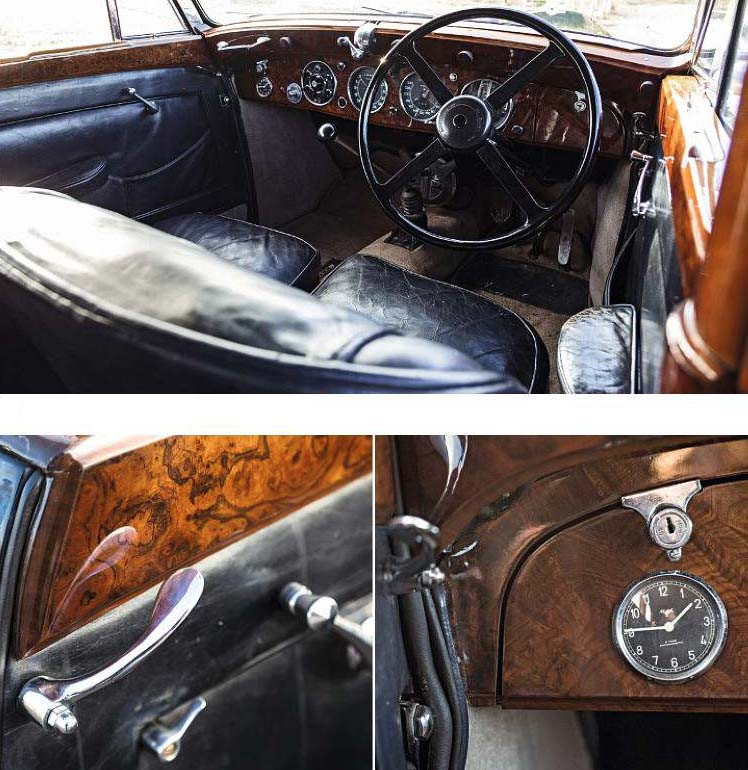
Structurally, the focus was on a low centre of gravity in a chassis of welded box-section, 8in deep in places. It was ruggedly cross-braced, although the actual gauge of the steel used was not particularly heavy, to save weight.
The gearbox sat separately from the engine to make room for extra bracing, with the resulting strength allowing for softer springs. The independent, ball-jointed twin-wishbone front suspension had 5ft-long torsion bars; semielliptics were used for the rear axle, which was American in origin but contained a Salisbury hypoid differential to keep the seating low.
There were three chassis lengths available for the V12, the 10ft 4in wheelbase being mostly reserved for the beautiful Frank Feeley-designed drophead coupés. The 11ft and 11ft 6in types tended to be for saloons and the occasional Hooper limousine. The bigger cars had taller radiators to maintain visual harmony, but the Lucas P100 headlights were common to all. Feeley’s factory sports-saloon bodies were hard to improve on, which is why coachwork by outside firms is not so often seen on the V12s, of which 100 are thought to survive. FXB 119, bodied by Freestone and Webb in the razoredge style on the shorter wheelbase, was supplied new to Miss Marion Mathieson of Park Gardens, Glasgow, in May 1939. Miss Mathieson was the sister of buccaneering privateer racing driver TASO Mathieson, who also owned a V12 Lagonda.
Second owner Edward Behrens – from 1947 to ’55 – was a financier, banker and early patron of Francis Bacon (Behrens owned a London art gallery, so presumably could have afforded something much newer). After the third owner, a Mr Adams, the trail goes cold, but we do know that FXB 119 ended up in Switzerland in the ’90s, where it had some refurbishment, before appearing at the Bonhams’ Mercedes-Benz World sale in 2011. Today, despite having had various work done at specialists Bishopgray and Alpine Eagle, the Lagonda is still very original and showing a believed correct 57,450 miles. “Take it where you like,” says Vintage & Prestige supremo Richard Biddulph. “In fact, take it up the motorway – but watch the brakes.”
The squat and beautifully proportioned Freestone and Webb lines are best described as ‘sporting formal’, and are somewhat akin to the bodies found on the straight-eight Daimlers by the same coachbuilder pre- and post-war. Only the right-hand side mount contains a spare wheel; the other side acts as a cover for the built-in jacking hydraulics, plus tools and an inspection light. Centre-hinged ‘suicide’ front doors were still the rule rather than the exception in the late 1930s, but, upon sliding backside-first on to the almost bucket-type seats, you at least don’t risk getting a gearlever up your trouser leg: the Lagonda has a workmanlike centre change operating in a balljoint on the floor.
The doors shut like a Mk1 British Rail firstclass carriage. Settling back into a beautifully patinated black leather interior with smooth seat cushions and cosy rear quarters, you notice the huge sunvisors to match the West of England cloth headlining and the tiny back window, which gives privacy for the rear occupants but a huge blindspot for the driver.
The window winders have a silky, low-geared action, and there are delightful little catches for the door locks and quarterlights. The chromed Art Deco-style heater by your ankles looks good and works well, or for fresh air you can wind out the top-hinged windscreen. There are narrow but deep lockable gloveboxes on either end of the dashboard, with the big, chrome-bezelled speedometer and rev counter as a centrepiece.
Most of the important functions are in a switch box to the left, but a loud/soft control for the hooters behind the steering wheel catches the eye. The seats are close together and you do feel the absence of a centre armrest. The sound of the starter, somewhat high-pitched and almost aeronautical, flows seamlessly into the smooth pick-up of 12 cylinders. The engine is silken but not entirely silent and set to run fast on the steering boss controls (which also work the hard/soft setting for the rear dampers) while it warms up.
With synchromesh on second, third and top in the Lagonda-built G80 gearbox, shifting ratios is no problem. The precise and welldamped lever works across a narrow gate that occasionally catches you out, but the synchros are effective and the gears are quiet, as is the whole car as an entity – although I’m not sure if, as a passenger, I’d quite be nodding off at 100mph as The Autocar reported in its ecstatic 1938 road test. The weekly magazines loved the V12 and didn’t need much of an excuse to drive one: when the The Motor told how it had touched 109mph in a Lagonda V12, questions were asked in the House of Commons about public safety.
You don’t need bottom gear often – you can pull away almost as quickly in second and then, if you’re feeling lazy, go straight to top. Full exploitation of the gears produces thrusting acceleration more akin to a post-war MkVII Jag than a big pre-war saloon. The next impression is how well the car rides and how eagerly it corners. The skinny 18in tyres tend to follow ruts, but in other respects there is a 1950s feel to the handling, which is far from unwieldy as long as you’re willing to put in some police Wolseleystyle wheel-feeding on roundabouts.
There is more than enough power to break away the tail, but the giant four-spoke wheel (you need its size for low-speed manoeuvring), connects to a fairly direct linkage so keeping things tidy is easy. Tight turnarounds aren’t an issue thanks to the decent lock: just keep the wheels rolling and an eye on that blindspot.
The pedals are close together, so it’s easy to press the clutch and brake at the same time until you get used to the spacing. The clutch is not too heavy – and easy to control – but, as Biddulph warned, the brakes are deeply uninspiring despite the impressive dimensions of the drums and the twin master cylinders. The car always stops in time – and in a straight line – but the long travel and uncertain response are inhibiting. That’s a shame, because the V12, with its magnificent views along the bonnet to those gleaming P100s, feels otherwise like a chariot of the gods. It revs sweetly, smoothly and freely to 4500rpm and beyond, covering the ground with almost indecent haste for an 85-year-old car.
Accompanied by its lusty turbine hum, its dominance of other traffic must have been sensational in the 1930s, and today you get the sense that the Lagonda wants to surge past slowmoving moderns. Only the knowledge that they can stop a lot faster prevents you from doing so. Giving engineers free rein to pursue their ideals doesn’t always work, but the fact that only 189 V12 Lagondas were ever built is probably as much down to the outbreak of WW2 as it was buyer resistance to the car’s price and complexity.
The two-year wait for the first production V12s probably didn’t do much to boost customers’ confidence, but development would almost certainly have continued had the war not started. Deliveries carried on into 1940, mainly for American buyers at the end: when it was shown at New York in 1939, the V12 Rapide was noted to be the most expensive car on display that year. With four SU carburettors and a 115mph top speed it was probably the fastest as well, this induction set-up having been derived from the lightweight two-seater V12s that had finished third and fourth at Le Mans that year.
That wasn’t the end of the V12 story. During WW2 Lagonda supplied 100 units to the Navy to use in explosive-packed launches intended to pierce the armour of unsuspecting battleships. The V12 also briefly replaced Isotta Frachini engines in a new torpedo-boat design by Vosper, the firm responsible for Sir Malcolm Campbell’s Blue Bird K4. When it became clear that the V12 needed regular 18-hour overhauls, however, the Admirality switched to Ford V8s. In peacetime two cars were built up out of parts, but the size, complexity and thirst of the V12 meant it wasn’t a saleable product for the austerity years.
The V12 was the crowning achievement of WO Bentley’s career and easily the best car ever to wear the Lagonda badge; it exceeded my expectations (a rare occurrence). In a world of hype it is a car that actually looks as if it’s worth its £165,000 price-tag, which is even rarer. I’m looking forward to driving another.
Thanks to Vintage & Prestige (vandp.net)
Clockwise from above: suicide doors aid ingress; dash has two gloveboxes; windscreen can be wound open; horn has ‘polite’ and ‘angry’ settings Large wheel dominates, but the steering is direct and the lock generous; closely spaced pedals take some acclimatisation Slit-like rear window creates a blindspot for the driver; seating is low, aided by rear axle’s Salisbury hypoid differential.
Extensive structural bracing enhances rigidity and the V12 corners with enthusiasm, but it also rides impressively well.The V12 feels swift and eager even in the company of modern traffic, but lacklustre brakes leave something to be desired.
Clockwise from right: V12 makes 180bhp from 4480cc and was engineered to last 250,000 miles; FXB 119 was sold new in May 1939; body is by Freestone and Webb of Willesden, north London The grandiose V12 was conceived by new Lagonda boss Alan Good to be ‘the best car in the world’. New, it cost almost £1200
TECHNICAL DATA 1938 LAGONDA V12
- Sold/number built 1938-1940/189
- Construction steel ladder-frame chassis, ash body frame, aluminium panels
- Engine nickel-iron crankcase and heads, sohc-per-bank 4480cc 60º V12, twin SU carburettors
- Max power 180bhp @ 5500rpm
- Max torque n/a
- Transmission four-speed manual, RWD
- Suspension: front independent, by double wishbones, torsion bars rear live axle, leaf springs; Armstrong lever-arm dampers f/r
- Steering Marles worm and roller
- Brakes drums
- Length 16ft (4877mm)
- Width 6ft 2in (1880mm)
- Height 5ft 3in (1600mm)
- Wheelbase 10ft 4in (3150mm)
- Weight 4368Ib (1981kg)
- 0-60mph 12.9 secs
- Top speed 103mph
- Mpg 11-13
- Price new £1200
- Price now £165,000


